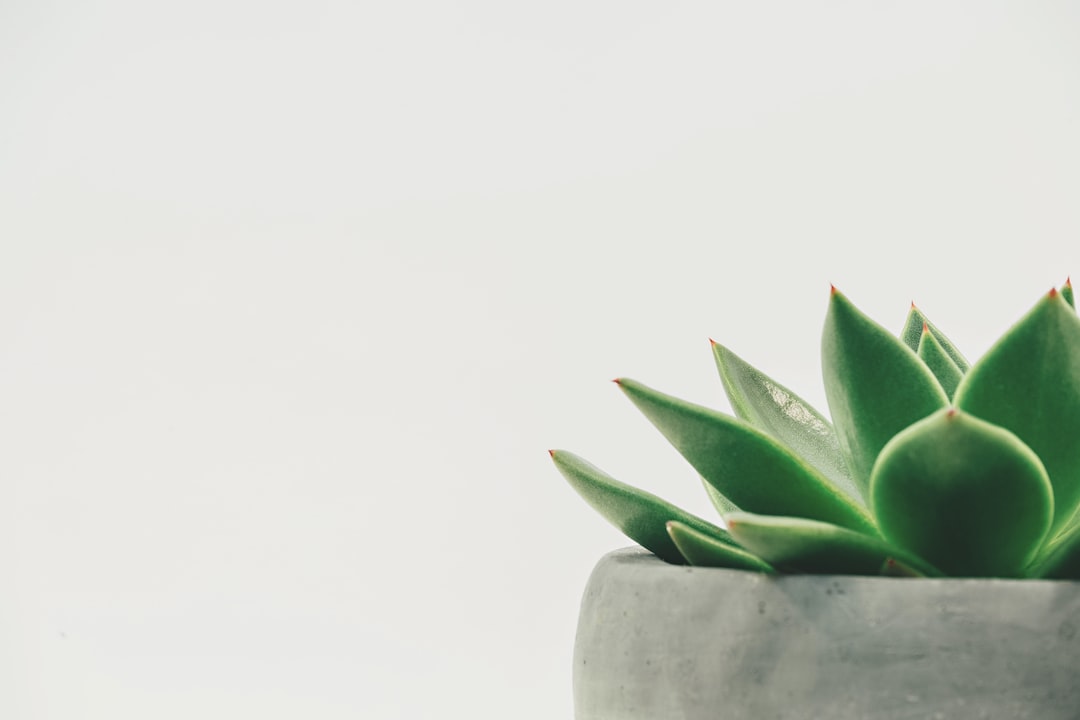Growing Your Own Tropical Paradise: A Step-by-Step Guide on Planting Palm Tree Seeds

Palm trees are iconic symbols of tropical paradise, with their tall, slender trunks and lush, green fronds swaying in the breeze. Many people dream of having their own palm tree garden, but may not know where to start. One of the best ways to grow palm trees is by planting seeds. There are several benefits to growing palm trees from seeds, including cost-effectiveness and the ability to choose from a wide variety of species.
When you plant palm tree seeds, you have the opportunity to grow a tree that is unique and tailored to your specific preferences. By choosing the right seeds, you can select a species that will thrive in your climate and provide the desired aesthetic for your garden. It is important to choose high-quality seeds from reputable sources to ensure successful germination and healthy growth.
Key Takeaways
- Planting palm tree seeds is the best way to grow your own tropical paradise.
- There are many different types of palm trees to choose from, each with unique characteristics.
- Choosing the right seeds for your climate and soil is crucial for success.
- Proper soil preparation and planting techniques are essential for healthy growth.
- Caring for your palm tree seedlings involves regular watering, fertilizing, and pruning.
Understanding the Different Types of Palm Trees
There are thousands of different species of palm trees, each with its own unique characteristics and growth habits. Some of the most common types of palm trees include the Coconut Palm, Date Palm, and Queen Palm.
The Coconut Palm is known for its tall trunk and large, feathery fronds. It is a popular choice for tropical landscapes and is also cultivated for its edible fruit. The Date Palm is another popular choice, known for its slender trunk and long, arching fronds. It produces sweet, edible dates and is often used in landscaping for its ornamental value. The Queen Palm is a fast-growing species with a graceful appearance and glossy green fronds.
Each type of palm tree has its own unique appearance and growth habits. Some species are more suited to coastal areas with sandy soil, while others can tolerate a wider range of soil types. It is important to research the specific requirements of each species before choosing which ones to plant in your garden.
Choosing the Right Seeds for Your Tropical Paradise
When selecting palm tree seeds, there are several factors to consider. First and foremost, you should choose seeds that are suited to your climate. Some palm tree species are more cold-hardy than others and can tolerate frost and freezing temperatures, while others are more sensitive to cold and require a warmer climate.
It is also important to choose seeds from reputable sources. Look for suppliers that specialize in palm tree seeds and have a good reputation for providing high-quality seeds. This will increase the chances of successful germination and healthy growth.
Preparing Your Soil for Planting
| Soil Preparation Techniques | Benefits |
|---|---|
| Tilling | Loosens soil, improves drainage, and aerates soil |
| Composting | Enriches soil with nutrients, improves soil structure, and increases water retention |
| Cover Cropping | Suppresses weeds, adds organic matter, and fixes nitrogen in soil |
| Soil Testing | Identifies nutrient deficiencies and pH imbalances, allowing for targeted soil amendments |
Palm trees have specific soil requirements that must be met in order for them to thrive. They prefer well-draining soil that is rich in organic matter. Before planting your palm tree seeds, it is important to prepare the soil properly.
Start by removing any weeds or grass from the planting area. This will help prevent competition for nutrients and water. Next, loosen the soil with a garden fork or tiller to improve drainage and aeration. If the soil is heavy clay or compacted, you may need to amend it with organic matter such as compost or peat moss to improve its texture.
Planting Palm Tree Seeds: Step-by-Step Guide
Once you have prepared the soil, it is time to plant your palm tree seeds. Here is a step-by-step guide to help you through the process:
1. Soak the seeds in warm water for 24 hours before planting. This will help soften the outer shell and promote germination.
2. Fill a seed tray or small pots with a well-draining potting mix.
3. Place one seed in each pot, burying it about 1 inch deep.
4. Water the pots thoroughly, ensuring that the soil is evenly moist but not waterlogged.
5. Place the pots in a warm, sunny location, such as a greenhouse or a sunny windowsill.
6. Keep the soil consistently moist, but not soggy, by watering regularly.
7. Germination can take anywhere from a few weeks to several months, depending on the species. Be patient and continue to care for the seeds until they sprout.
Caring for Your Palm Tree Seedlings: Watering, Fertilizing, and Pruning

Once your palm tree seeds have germinated and sprouted, it is important to provide them with proper care to ensure healthy growth. This includes watering, fertilizing, and pruning.
Watering requirements for palm tree seedlings can vary depending on the species and climate. In general, palm trees prefer moist soil but can be sensitive to overwatering. It is important to water deeply and allow the soil to dry out slightly between waterings. Avoid letting the soil become completely dry or waterlogged.
Fertilizing is also important for healthy palm tree growth. Use a slow-release fertilizer specifically formulated for palm trees, following the instructions on the package. Apply the fertilizer evenly around the base of the tree, taking care not to get it on the leaves or trunk.
Pruning is necessary to promote strong, attractive trees. Remove any dead or damaged fronds as they appear, using clean pruning shears or scissors. Avoid removing too many fronds at once, as this can stress the tree and inhibit growth.
Protecting Your Palm Trees from Pests and Diseases
Palm trees are susceptible to a variety of pests and diseases that can affect their health and appearance. Some common pests that affect palm trees include aphids, scale insects, and spider mites. These pests can cause damage to the leaves and weaken the tree if left untreated.
To prevent pest infestations, regularly inspect your palm trees for signs of pests and take action at the first sign of trouble. This may include using organic pest control methods such as insecticidal soap or neem oil, or seeking professional help if the infestation is severe.
In addition to pests, palm trees can also be susceptible to diseases such as fungal infections and nutrient deficiencies. Proper care and maintenance, including regular fertilization and watering, can help prevent these issues. If you notice any signs of disease, such as yellowing or wilting leaves, it is important to take action immediately to prevent further damage.
Transplanting Your Palm Trees: When and How to Do It
As your palm trees grow, they may eventually outgrow their pots and need to be transplanted into larger containers or into the ground. There are several signs that indicate it is time to transplant your palm tree.
One sign is when the roots start to become crowded and begin to circle around the inside of the pot. This can restrict the tree’s growth and lead to root rot. Another sign is when the tree becomes top-heavy and starts to lean or become unstable in its current container.
To transplant your palm tree, start by selecting a new container or planting location that is large enough to accommodate the tree’s root system. Carefully remove the tree from its current pot, taking care not to damage the roots. Place the tree in its new container or hole, making sure that it is planted at the same depth as it was before.
Water the tree thoroughly after transplanting and continue to provide proper care and maintenance as outlined in previous sections.
Tips for Maintaining Your Tropical Paradise
Maintaining a healthy, beautiful palm tree garden requires regular care and maintenance. Here are some additional tips to help you keep your tropical paradise thriving:
– Water your palm trees deeply and infrequently, allowing the soil to dry out slightly between waterings.
– Mulch around the base of your palm trees to help retain moisture and suppress weeds.
– Fertilize your palm trees regularly with a slow-release palm tree fertilizer.
– Prune your palm trees as needed to remove dead or damaged fronds and promote healthy growth.
– Protect your palm trees from extreme temperatures and frost by covering them with a blanket or burlap during cold weather.
– Regularly inspect your palm trees for signs of pests or diseases and take action at the first sign of trouble.
By following these tips and providing proper care and maintenance, you can enjoy a healthy, beautiful palm tree garden for years to come.
Enjoying the Fruits of Your Labor: Harvesting and Using Palm Tree Seeds
One of the joys of growing palm trees from seeds is the ability to harvest and use the seeds for various purposes. Palm tree seeds, also known as palm nuts or coconuts, can be harvested when they are mature and ready to be planted or used in cooking and crafting.
To harvest palm tree seeds, wait until the fruit has turned from green to brown and has fallen from the tree naturally. Collect the fallen fruit and remove the outer husk to reveal the seed inside. Rinse the seed thoroughly to remove any remaining husk or debris.
Palm tree seeds can be used in a variety of ways. In cooking, they can be used to make coconut milk, coconut oil, or added to dishes for flavor and texture. In crafting, they can be used to make jewelry, decorations, or even musical instruments.
Conclusion:
Growing palm trees from seeds is a rewarding and cost-effective way to create your own tropical paradise. By choosing the right seeds, preparing the soil properly, and providing proper care and maintenance, you can enjoy healthy, beautiful palm trees in your garden for years to come. Whether you are looking to create a lush oasis in your backyard or simply want to add a touch of tropical flair to your landscape, planting palm tree seeds is the way to go. So why wait? Start your own tropical paradise today!
If you’re interested in learning how to plant a palm tree seed, you might find this article from Lawn World helpful. It provides step-by-step instructions on planting palm tree seeds and nurturing them into healthy trees. Check out the article here for all the details you need to get started on your palm tree planting journey.



